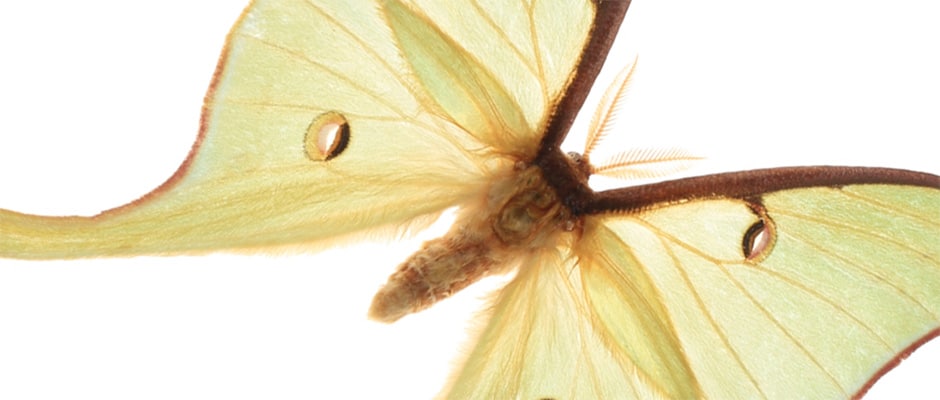Share this article
Long Moth Tails Make Predators Go Batty
The best way for some moths to avoid ending up on an upside-down dinner plate is by sporting a lot of tail, according to new research.
A study published in the Proceedings of the National Academy of Sciences yesterday reveals that luna moths (Actias luna) have evolved long tails to help them elude big brown bats (Eptesicus fuscus).
“These bats were clearly attacking luna moths and loved it when they got them,” said Jesse Barber, an assistant professor of biology at Boise State University and the lead author of the study. But due to the long, flowing tails the moths sported, that didn’t happen quite so often.
The idea first came to Barber while on a field study in Borneo where they took a mobile testing tent into the jungle. While they were working on something else at the time, Barber and others tossed some moths into the tent along with some bats and noticed that the bats seemed to be grabbing onto the insects’ tails.
“In the tropics you can see a really interesting bat-moth interaction,” he said.
He didn’t get the chance to test these theories until years later in a special “custom built bat-insect battle research facility” equipped with cameras. The researchers took luna moths — species found widely across North America and appear to have coevolved cousins in many parts of the world — and tethered them with string in the range of the cameras in the lab so that they could watch the interactions more closely. They would then release big brown bats, a species also appearing across North America, into the room and sat down to watch the show.
“It’s like any kid’s dream,” Barber said of the lab and research. “We’d pit them against each other one at a time.”

The tiff is two video frames from a high-speed movie of a big brown bat (Eptesicus fuscus) biting the tail off a luna moth (Actias luna).
Image Credit: Boise State University
They also used different kinds of moths, both smaller and larger, as well as luna moths without tails, to see how the interactions would change. They found that the bats could get a hold of the smaller bugs and the luna moths without tails much more easily. While size was an advantage — the bats caught the smaller moths more often than larger lunas — “Tails appear to give you a great advantage than size alone.”
Statistically, the researchers found that the bats only caught tailed moths 55 percent of the time, and that luna moths with tails had a survival advantage of 47 percent over luna moths minus tails.
The knowledge of these interactions is important for a larger understanding of the ecosystem as well as evolution. “Understanding these battles is very critical to understanding the diversification of life,” Barber said.
Header Image:
Actias luna moth.
Image Credit: Geena Hill, University of Florida









